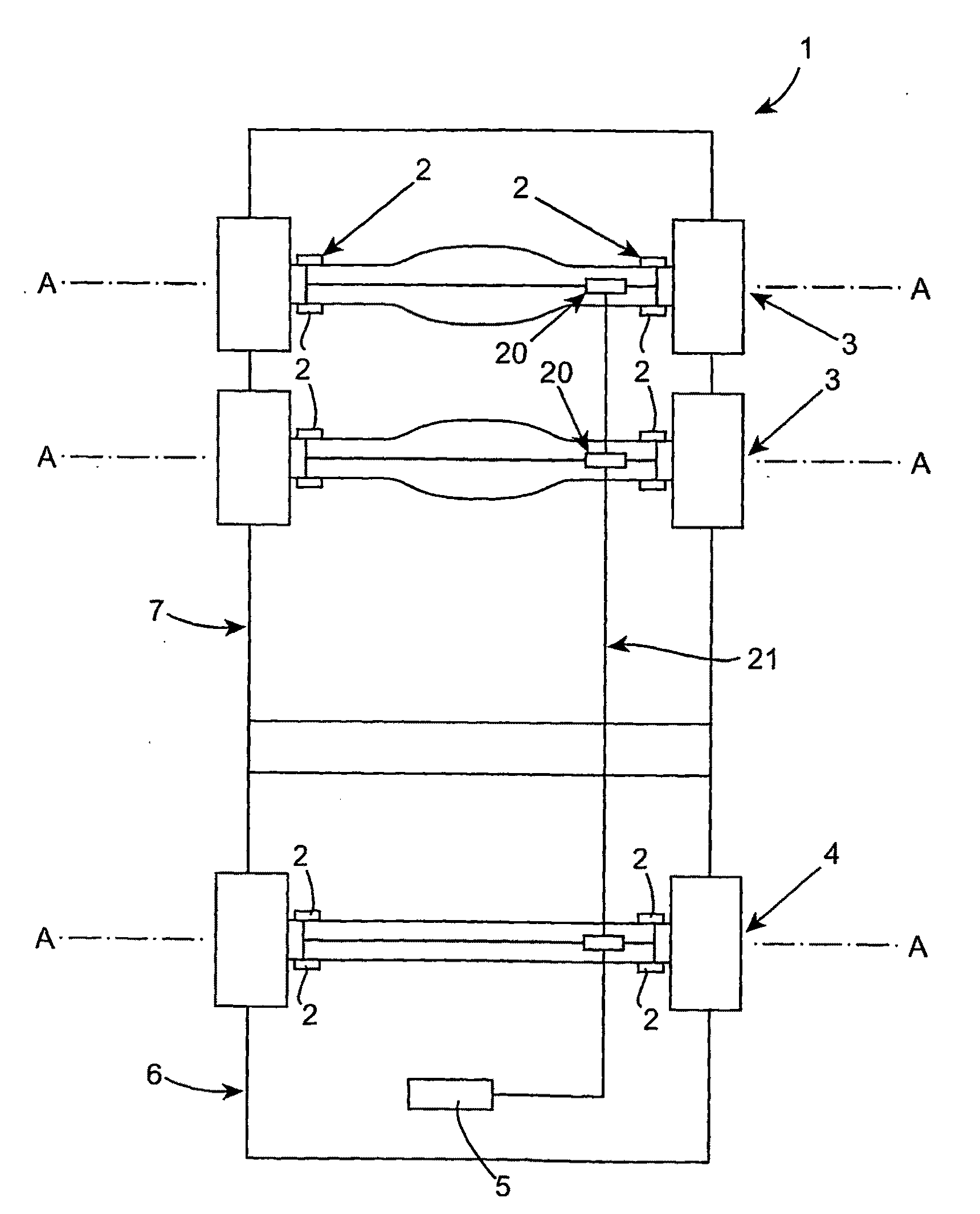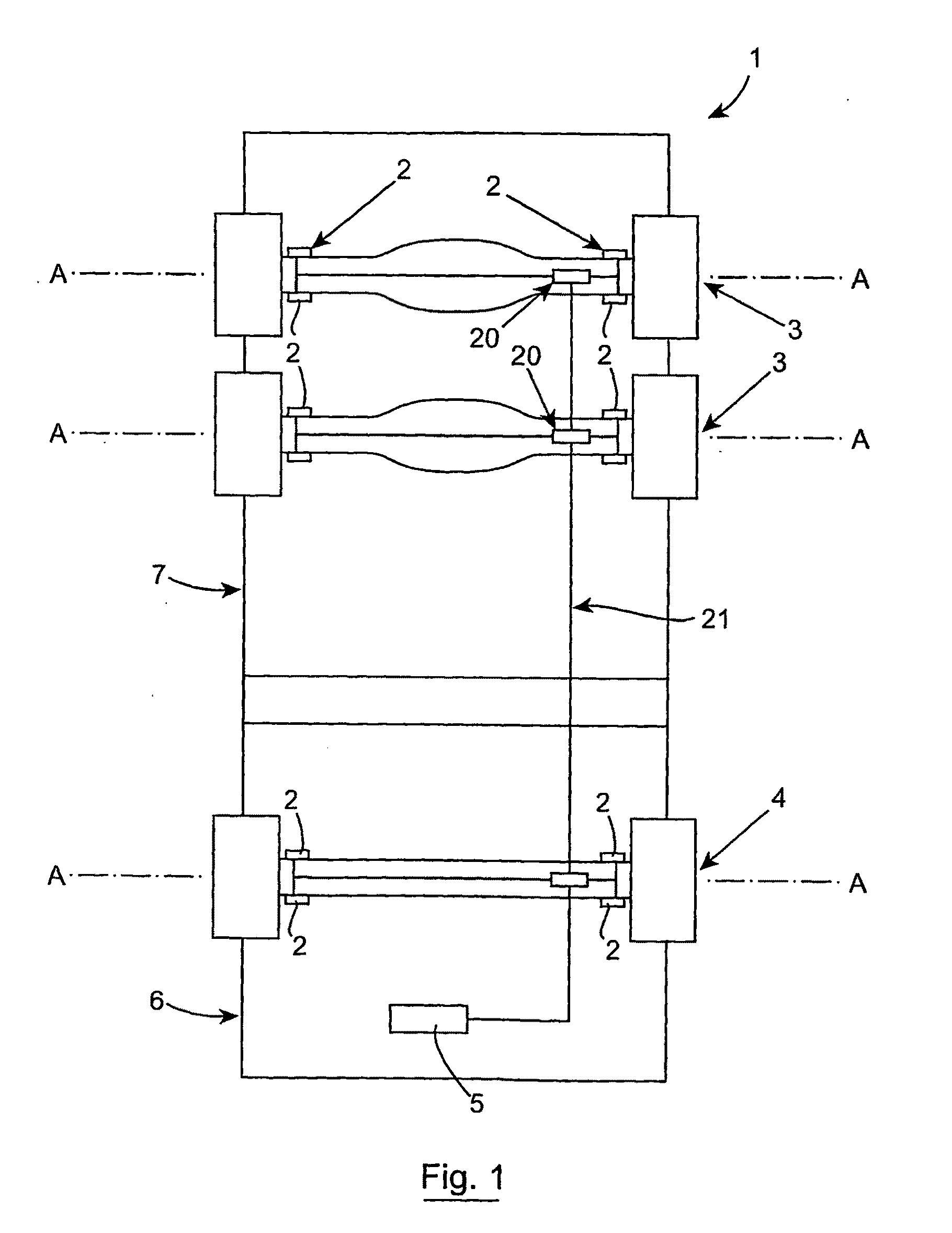System for Determining a Vehicle Load
- Summary
- Abstract
- Description
- Claims
- Application Information
AI Technical Summary
Benefits of technology
Problems solved by technology
Method used
Image
Examples
example
[0110]A finite element analysis (FEA) of a truck axle from a DAF tractor unit was carried out and the strain distribution determined is shown in FIG. 2.
[0111]The strain intensity plot highlighted three areas of high strain in the structure, one directly-beneath the point of application of the load and the others at the quarter points on the front face of the axle arm directly beneath the point of load application. Placing the strain gauges 2 directly beneath the point of load application may be impractical. Instead further investigation was performed focussing on the strain distribution within the front wall.
[0112]Static analysis in the range of expected axle loads showed a linear increase in strain, both in the vertical and longitudinal directions, with increasing payload. The strains versus payload in the longitudinal direction (X direction) and the vertical direction (Y direction) are shown in FIG. 3 and FIG. 4 respectively.
[0113]From these results the invention demonstrates that...
PUM
 Login to View More
Login to View More Abstract
Description
Claims
Application Information
 Login to View More
Login to View More - R&D
- Intellectual Property
- Life Sciences
- Materials
- Tech Scout
- Unparalleled Data Quality
- Higher Quality Content
- 60% Fewer Hallucinations
Browse by: Latest US Patents, China's latest patents, Technical Efficacy Thesaurus, Application Domain, Technology Topic, Popular Technical Reports.
© 2025 PatSnap. All rights reserved.Legal|Privacy policy|Modern Slavery Act Transparency Statement|Sitemap|About US| Contact US: help@patsnap.com



